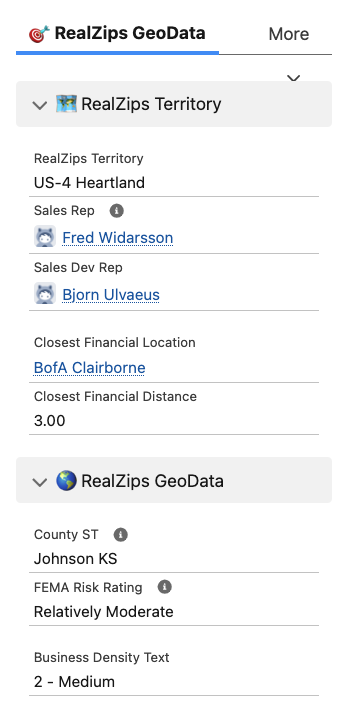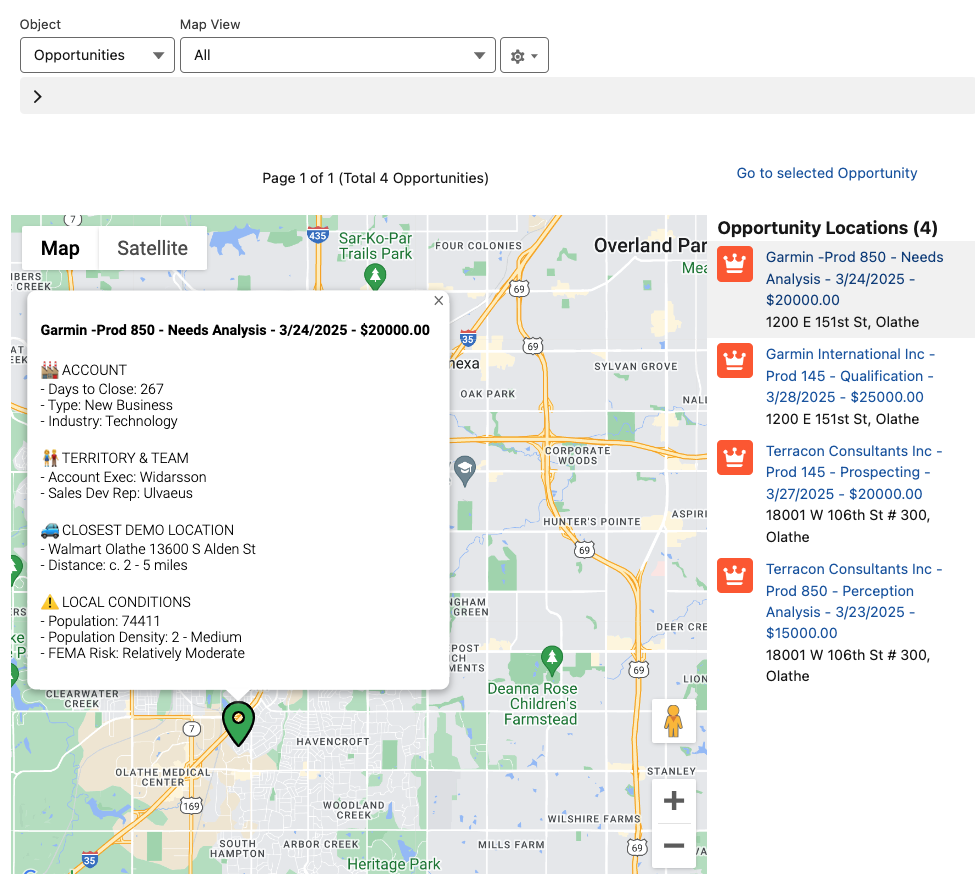What is Geographical Metadata?
Geographic metadata refers to the detailed geographic information associated with Salesforce records, such as leads, accounts, and opportunities. This metadata provides context about these records’ location and distance relationships, enabling your team to optimize activities and automate Salesforce workflows.
Why is Geographic Metadata critical?
By incorporating geographic metadata, you will immediately remove a number of pain points and automate numerous workflows. At the same time, you will enrich and organize your Salesforce data to be used by Agentforce AI. Implementing geographical metadata today will immediately drive better business outcomes for your entire team.
Do you need data enrichment?
Not having geographic metadata in Salesforce today creates significant inefficiencies. Sales teams struggle with ineffective territory management, leading to missed opportunities and unbalanced workloads.
Without geographic metadata, marketing teams have difficulty targeting regional audiences, leading to less effective and costly campaigns. Customer service teams struggle to provide support because they cannot optimize operations based on proximity. The lack of geographic insights hinders strategic decision-making, leading to suboptimal resource allocation and planning.
Missing geographic metadata impedes overall efficiency and effectiveness across all Salesforce-related workflows.
Geographic Data Structure and AI

Access to verified geographic metadata in Salesforce becomes critical when introducing generative Artificial Intelligence (AI). Geographic metadata enhances the capabilities of generative AI thanks to contextual, location-based information that guarantees more precise, relevant, and actionable insights.
Here are the most common reasons why geographic metadata is critical when it comes to putting AI to work for your team:
1. Personalized Customer Interactions
- Tailored Content Generation: Generative AI can use geographic metadata to create personalized messages, offers, and content tailored to customers’ preferences in different regions.
- Localized Language and Tone: AI can adapt the language, tone, and cultural references in communications to align with regional nuances while improving engagement.
2. Optimized Sales and Marketing Strategies
- Targeted Campaigns: AI can be used to design marketing campaigns that target specific geographic regions based on local trends, demographics, and consumer behaviors.
- Predictive Analysis: Geographic data can enhance AI-driven predictive models, allowing them to forecast sales trends and market demand by regions.
3. Faster Decision-Making
- Data-Driven Insights: AI algorithms can analyze geographic metadata to identify patterns, providing decision-making insights.
- Regional Performance Analysis: Your team can use AI to compare the performance of different regions, allocating resources effectively and uncover areas for growth.
4. Improved Customer Service
- Efficient Field Service Management: AI can help optimize the deployment of field service teams by using geographic distance and metadata, ensuring timely responses and service delivery.
- Incident Response: AI can use location data to predict and preemptively address future service issues based on regional incident patterns.
5. Advanced Reporting and Analytics
- Geospatial Analytics: Geographic metadata allows AI to generate sophisticated geospatial analytics, such as heat maps and geocoded reports, providing deeper insights into regional performance.
- Contextual Analysis: AI can tap into deep contextual geographic data, leading to a better understanding of business challenges and opportunities
6. Enhanced Territory Management
- Dynamic Territory Adjustment: AI can be used to adjust sales territories based on geographic data and Salesforce metrics, ensuring balanced workloads and optimal coverage.
- Proximity-Based Assignment: AI can automate the assignment of leads, accounts and opportunities to sales reps and locations based on distance, improving efficiency and conversion rates.
7. Automated Customer Segmentation
- Granular Segmentation: Geographic metadata enables AI to segment customers more granularly, allowing highly targeted marketing and sales efforts.
- Location-Based Recommendations: AI can provide location-based product or service recommendations, increasing relevance and likelihood of purchase.
Get started with RealZips GeoData

RealZips is a powerful app that automatically enriches your Salesforce records with deep geographic metadata.
RealZips can be implemented in a matter of days, instantly providing detailed geographic data and process automation.
Thanks to the rich geographic metadata in RealZips, generative AI can significantly enhance Salesforce workflows. This integration allows for localized content generation and customized offers, optimizing sales territory management, lead routing, and assigning team members and channel partners. It also enables highly targeted marketing campaigns and efficient event planning.
Finally, enhanced customer segmentation and location-based recommendations drive precise and effective marketing and sales strategies. RealZips geographic metadata grounds Agentforce AI in Salesforce, driving better business outcomes and higher efficiency.
Next Steps
- Click here to view examples of AI generated email, case summary and next actions for an opportunity.
- Learn about geographic metadata and automatic data enrichment.
